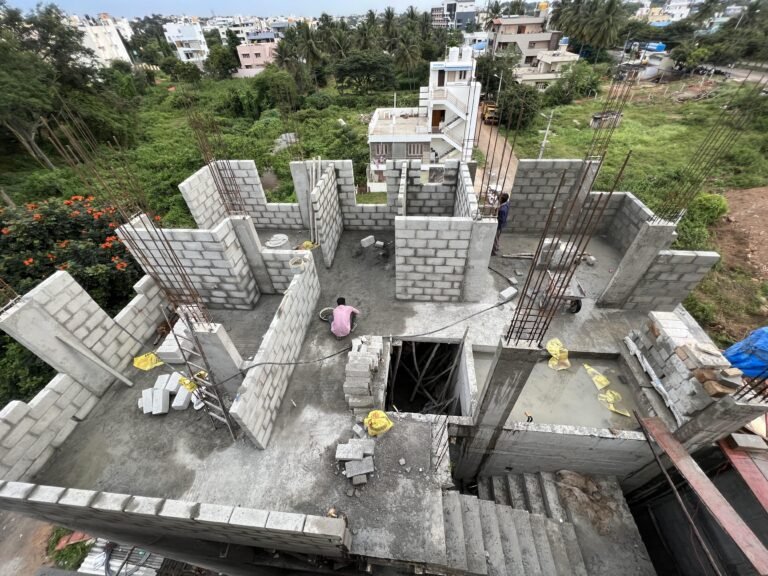Architecture is more than just the design of buildings; it is a discipline that combines art, science, and technology to shape the spaces we inhabit. As a reflection of culture, history, and innovation, architecture influences how we live, work, and interact with our surroundings. This blog delves into the multifaceted world of architecture, exploring its history, principles, and the role it plays in shaping the future.
A Brief History of Architecture
The history of architecture spans millennia, with roots that trace back to the earliest human settlements. From the primitive shelters of prehistoric times to the grand monuments of ancient civilizations, architecture has always been a response to human needs and aspirations.
Ancient Architecture: Ancient civilizations like the Egyptians, Mesopotamians, Greeks, and Romans laid the foundation for architectural principles that continue to inspire modern design. The Great Pyramids of Giza, the Parthenon, and the Colosseum are enduring examples of how these societies used architecture to express power, spirituality, and cultural identity.
Medieval and Gothic Styles: During the Middle Ages, architecture became more ornate and symbolic. Gothic cathedrals, with their pointed arches, ribbed vaults, and flying buttresses, showcased advancements in engineering and a desire to reach toward the heavens.
Renaissance Revival: The Renaissance period saw a return to classical principles, emphasizing symmetry, proportion, and harmony. Architects like Brunelleschi and Palladio combined mathematical precision with artistic creativity, paving the way for modern architectural theory.
Modernism and Beyond: The 20th century ushered in a new era of architectural innovation, driven by industrialization and technological progress. Modernist architects like Le Corbusier, Frank Lloyd Wright, and Ludwig Mies van der Rohe emphasized functionality and simplicity, rejecting ornamental styles. Today, architecture continues to evolve, embracing sustainability, digital technology, and cultural diversity.
Core Principles of Architecture
Architecture is guided by a set of core principles that ensure buildings are not only functional but also aesthetically pleasing and environmentally responsible. These principles include:
- Form and Function: At the heart of architecture is the balance between form (the visual and aesthetic aspects) and function (the practical use of the space). A well-designed building harmonizes these two elements, ensuring that it serves its intended purpose while also being visually appealing.
- Context and Site: Understanding the environment in which a building is constructed is crucial. Architects consider factors such as climate, geography, and cultural context to create structures that are both sustainable and harmonious with their surroundings.
- Sustainability: As concerns about climate change grow, sustainable architecture has become a priority. This involves using eco-friendly materials, optimizing energy efficiency, and designing buildings that minimize environmental impact.
- Innovation and Technology: Advances in technology have transformed the architectural process. From computer-aided design (CAD) software to 3D printing and virtual reality, architects now have tools that enable them to push the boundaries of creativity and precision.
- Human-Centric Design: Architecture should prioritize the needs and experiences of the people who use the space. This involves considering factors such as accessibility, comfort, and the psychological impact of design choices.
Iconic Architectural Styles
Throughout history, different architectural styles have emerged, each reflecting the values and aesthetics of its time. Here are some of the most notable:
- Classical Architecture: Characterized by columns, pediments, and symmetrical proportions, classical architecture draws inspiration from ancient Greek and Roman designs.
- Gothic Architecture: Known for its dramatic, vertical emphasis and intricate details, Gothic architecture is often associated with cathedrals and churches.
- Baroque and Rococo: These styles are marked by elaborate ornamentation, dynamic shapes, and a sense of movement and drama.
- Modernism: Emphasizing simplicity, functionality, and the use of industrial materials, modernist architecture broke away from traditional forms.
- Postmodernism: A reaction against the rigidity of modernism, postmodern architecture embraces eclecticism, irony, and playful references to historical styles.
- Contemporary Architecture: Today’s architecture is diverse and innovative, often incorporating sustainable practices, advanced technology, and unique design concepts.
Architecture and Urban Planning
Architecture plays a pivotal role in urban planning, shaping the way cities develop and function. Effective urban design integrates architecture with infrastructure, public spaces, and transportation systems to create livable and sustainable environments.
Smart Cities: The rise of smart city initiatives highlights the importance of integrating technology into urban planning. Architects are collaborating with engineers and planners to design buildings and neighborhoods that leverage data and connectivity to improve quality of life.
Green Urbanism: As cities face challenges like overpopulation and pollution, green urbanism offers solutions through sustainable design. This includes green roofs, urban farming, and the use of renewable energy sources.
Mixed-Use Developments: Modern urban planning often emphasizes mixed-use developments, where residential, commercial, and recreational spaces coexist. This approach promotes walkability, reduces commuting times, and fosters vibrant communities.
The Role of Technology in Architecture
Technology has revolutionized every aspect of architecture, from design and construction to maintenance and renovation. Key advancements include:
- Building Information Modeling (BIM): BIM software enables architects to create detailed digital models of buildings, improving collaboration and reducing errors during construction.
- Sustainable Technologies: Innovations such as energy-efficient HVAC systems, smart glass, and solar panels have made it easier to design eco-friendly buildings.
- 3D Printing: This technology allows for the creation of complex architectural components and even entire structures with unprecedented precision.
- Artificial Intelligence: AI is being used to optimize designs, predict structural performance, and analyze environmental impact.
- Virtual and Augmented Reality: These tools provide immersive experiences for clients and stakeholders, helping them visualize spaces before they are built.
Challenges and Opportunities
While architecture has made remarkable strides, it also faces significant challenges. Urbanization, climate change, and social inequality are some of the issues that demand innovative solutions.
Affordable Housing: As cities grow, providing affordable and quality housing remains a pressing concern. Architects are exploring modular construction and adaptive reuse of existing structures to address this challenge.
Resilience: With the increasing frequency of natural disasters, designing resilient buildings that can withstand extreme weather conditions is essential.
Cultural Preservation: Balancing modernization with the preservation of cultural heritage is a delicate task, particularly in historic cities.
Technological Ethics: While technology offers immense potential, architects must also consider ethical implications, such as data privacy and the environmental impact of new materials.
The Future of Architecture
The future of architecture lies in embracing innovation while staying rooted in the timeless principles of design. Key trends shaping the industry include:
- Sustainable Design: The push for net-zero buildings and carbon-neutral construction will continue to drive innovation in materials and methods.
- Biophilic Design: Incorporating natural elements into architecture can enhance well-being and foster a deeper connection with the environment.
- Adaptive Reuse: Repurposing old buildings for new uses reduces waste and preserves cultural heritage.
- Global Collaboration: As architecture becomes increasingly globalized, cross-cultural collaborations are leading to diverse and inclusive design solutions.
- Digital Transformation: Emerging technologies like generative design and smart building systems will redefine the way architects approach their craft.
Conclusion
Architecture is a dynamic and ever-evolving field that reflects the aspirations and challenges of humanity. By blending art, science, and technology, architects have the power to shape not just buildings but the very fabric of society. As we look to the future, it is clear that architecture will continue to play a pivotal role in creating spaces that are beautiful, functional, and sustainable—a testament to the enduring power of design.




